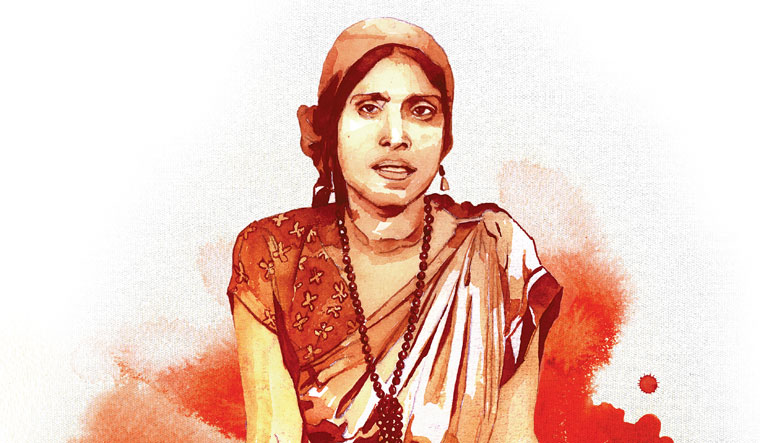Suhasini was a revolutionary. She was also a singer, a dancer and a poet. Noted American journalist Edgar Snow, in the article ‘The Revolt of India’s Women’, described her as the most beautiful woman he had ever seen. Suhasini Nambiar née Chattopadhyay, the first Indian woman to become a member of the Communist Party of India, was all these and more.
Suhasini was one of the few, if not the only Indian, to be received by Mao Zedong on visiting China. But, as the Communist Party of India celebrates 100 years of its formation, she remains relegated to the dusty pages of history.
“Tracing the details about Suhasini was a laborious task,” said Vappala Balachandran, a retired IPS officer, who wrote A Life in Shadow: The Secret Story of ACN Nambiar—a widely discussed book about Suhasini’s husband. “Whoever she met was totally impressed by her intellect, beauty and fiery personality, but if you look for physical footprints, you may not find any,”he told THE WEEK. Balachandran, who retired as special secretary, Union cabinet secretariat, said that the most detailed chronological details of Suhasini’s life were maintained by the Bombay Special Branch; she was under surveillance till 1951.
Born in Hyderabad in 1901 into an illustrious Bengali family, she was the youngest of eight children. Her father, Aghore Nath, was a renowned scientist who was closely involved in the freedom movement. He was the principal of Hyderabad College. Her siblings were all illustrious in their own fields—the most famous being Sarojini Naidu, the Nightingale of India, and Virendranath (Chatto), the revolutionary freedom fighter who believed international support was vital to fight the British.
Life changed for Suhasini at 17. She met A.C.N. Nambiar, who later came to be known as Jawaharlal Nehru’s mysterious “journalist friend” who accompanied Subhash Chandra Bose to meet Adolf Hitler. The son of Vengayil Kunhiraman Nayanar, the first short story writer in Malayalam, Nambiar shared a great rapport with Indira Gandhi, too. A Padma Bhushan awardee, Nambiar was Indian ambassador to Germany from 1955 to 1958. Thanks to the speculation that Nambiar was a spy, he still remains a mysterious figure.
When the duo met in Chennai, Nambiar was a struggling young lawyer. Both were passionate and hugely talented. What followed was a whirlwind romance and a marriage, against the wishes of Nambiar’s family. The couple moved to London in 1919, soon after the wedding; Suhasini joined Oxford University for studies and Nambiar started working as a journalist. After two years, they shifted to Berlin where she joined Berlin University to study German and Nambiar continued working as a journalist. Suhasini did translation gigs and also taught English to Germans.
It was life in Berlin or rather the political climate of Berlin that changed their lives forever. Suhasini gradually got drawn into radical left politics, leaving her Gandhian thoughts behind. Her firebrand brother, on whom British writer Somerset Maugham based a character in his short story Giulia Lazzari, was a major influence. Suhasini wanted to study Marxism deeper and left for the Soviet Union to join the Eastern University for Asian Students. She apparently got so immersed in communist ideology that her visits to Berlin became scarce. Suhasini also got drawn to the Chinese Communist Party around the same time.
In 1928, she returned to India, on the direction of Communist Internationale, to activate communist movements in India. The Communist Internationale was of the opinion that the movement was quite “lethargic and moribund”in India. Nambiar stayed back in Berlin and it was a separation that lasted.
In Bombay, she became a prominent face of the communist movement and played an active role in assisting those arrested in the Meerut Conspiracy Case. Suhasini played an active role in The Little Ballet Group and Indian Peoples’Theatre Association. Under her leadership, they staged plays which were well received by the public. She also started publishing The New Spark for the communist party.
Unaware that Nambiar was getting closer to his German secretary, Suhasini wrote to him for six years, appealing him to come to India. When Nambiar finally ended the marriage, it broke Suhasini and she is said to have gone into depression. “Nambiar and Suhasini were quite an unusual couple,” said Balachandran. “While Nambiar preferred to be a low profile leftist journalist and remained somewhat neutral, Suhasini was full of fire. They were bound to break up.”
According to those close to her, Suhasini never really recovered from the emotional blow. But she did not show it. She dived into politics and continued to be the go-to-person in the socio-political scene in Bombay. In 1938, she married R.M. Jambhekar, a poet and trade union activist.
“Suhasini, the first Indian woman communist, had various facets in her illustrious life,” said Subhashini Ali, Communist Party of India (Marxist) Polit Bureau member. “When I met her, she was more into social work. But she remained a deeply political person.” According to Ali, Suhasini was very active with her NGO, New Work Centre for Women, till the very end.
Suhasini was in politics till the late 1950s. As she could not accept the new style of politics that emerged in the 1960s, she gradually withdrew. Soon, her health deteriorated and she became wheelchair-bound.
Suhasini, the deeply political, chain-smoking liberal, whom Captain Lakshmi (Lakshmi Sahgal of the INA) called her first political mentor, died unsung in 1973 in Bombay.


